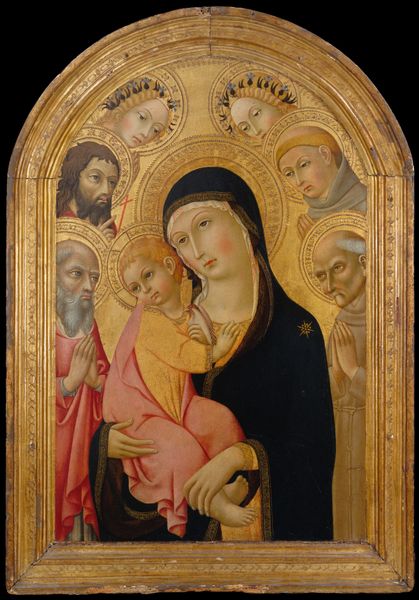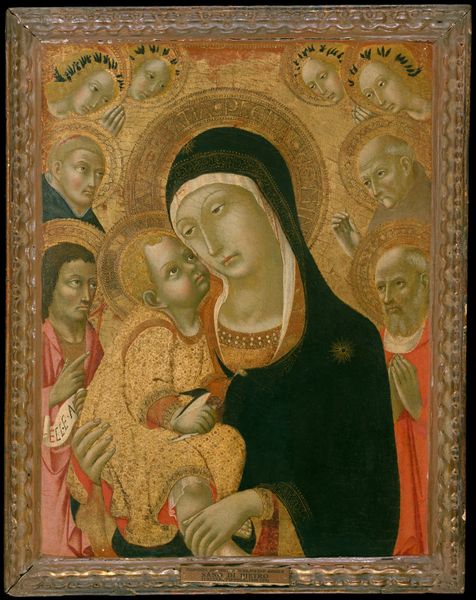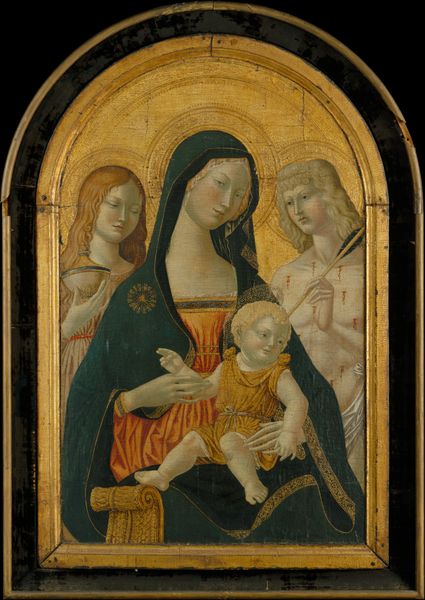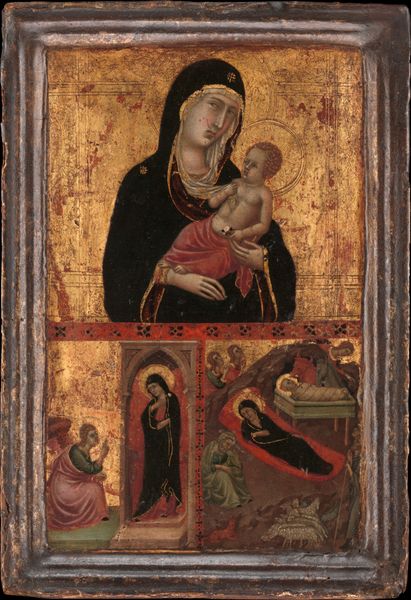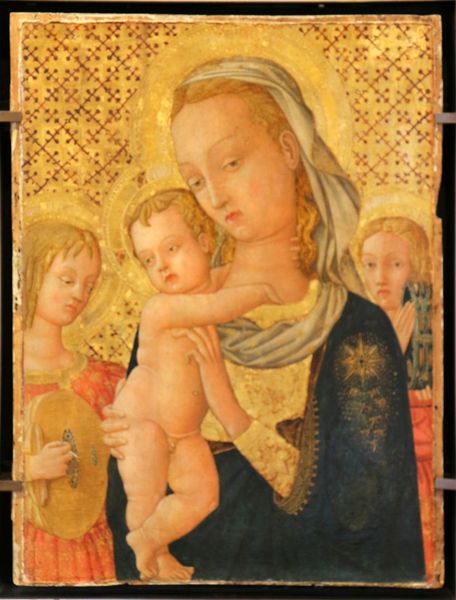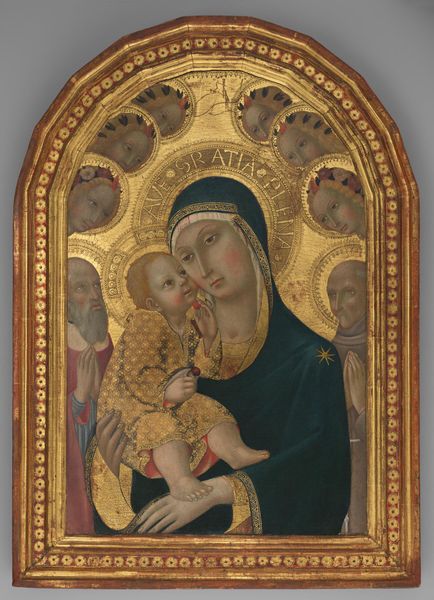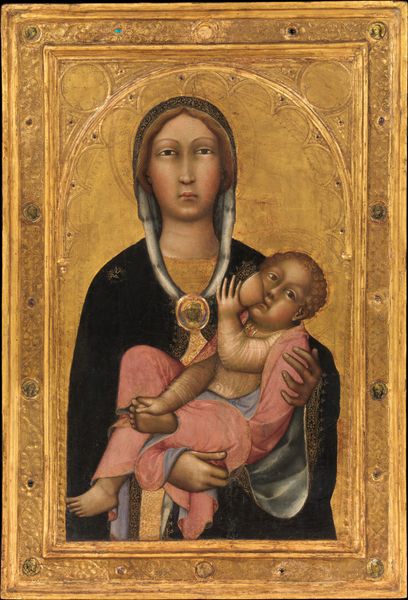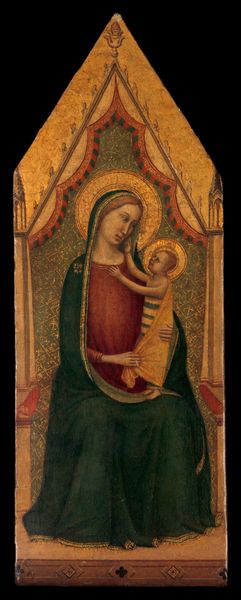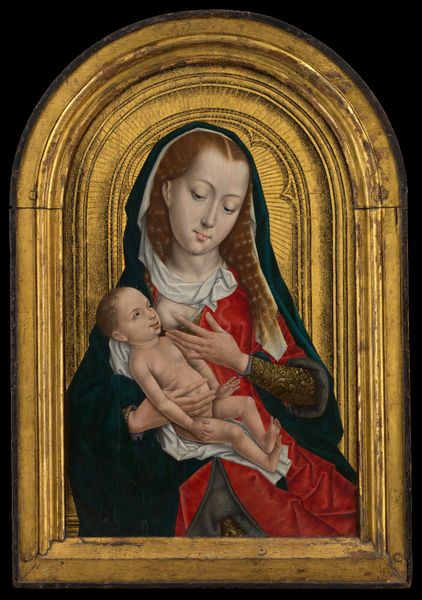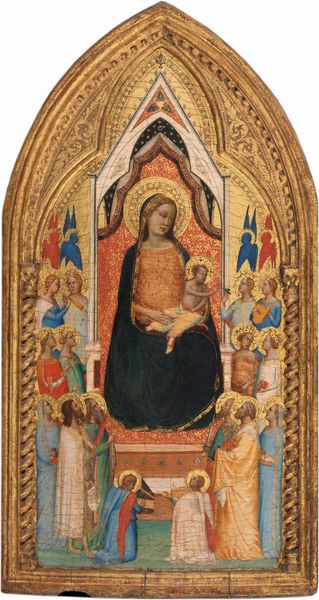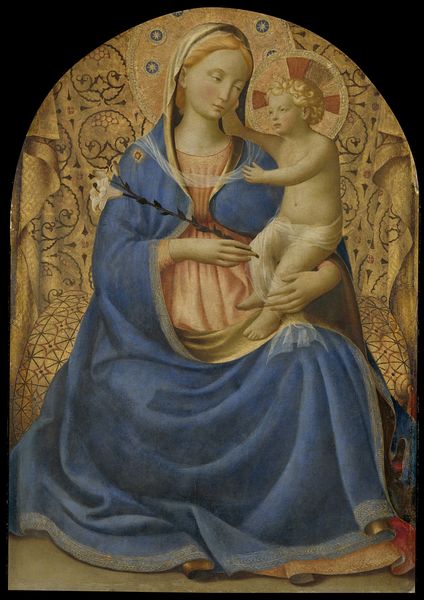
Madonna and Child with the Dead Christ, Saints Agnes and Catherine of Alexandria, and Two Angels 1465 - 1475
0:00
0:00
tempera, painting
#
portrait
#
tempera
#
painting
#
figuration
#
madonna
#
oil painting
#
child
#
italian-renaissance
#
portrait art
#
angel
#
christ
Dimensions: Main panel, overall, with engaged (modern) frame, 12 3/4 x 11 3/4 in. (32.4 x 29.8 cm), painted surface 10 7/8 x 9 7/8 in. (27.6 x 25.1 cm); predella, overall, with engaged (modern) frame, 3 5/8 x 12 5/8 in. (9.2 x 32.1 cm), painted surface 2 5/8 x 11 7/8 in. (6.7 x 30.2 cm)
Copyright: Public Domain
Editor: So, this tempera on panel painting, “Madonna and Child with the Dead Christ, Saints Agnes and Catherine of Alexandria, and Two Angels” by Sano di Pietro, created sometime between 1465 and 1475… The way everyone gazes solemnly outward is quite striking. What social functions would a piece like this have served? Curator: That's a great starting point. Think about where this would have lived: likely in a private chapel, a focal point for devotional practice. Its impact relies on accessibility of the artwork. Di Pietro flattens and elongates his subjects so that its message comes through immediately, as any ambiguity would distract from the intended meaning and ritual function. Can you see any signals related to contemporary politics or institutions? Editor: The figures’ clothes feel pretty luxurious, which suggests wealth. The Madonna has almost a direct stare toward us. Does that connect to its ritual function as well? Curator: Absolutely. Her direct gaze connects the earthly and the divine realms, a deliberate and powerful interaction intended to influence social relationships within that Sienese community. Her robes speak to the commissioning patron’s wealth, cementing their elevated position in society. Editor: So it's both spiritual and a demonstration of social standing, shaping societal perceptions. Would most people be able to connect with the painting's underlying messages? Curator: Yes. This reflects the broader Renaissance shift towards integrating religious devotion with the material world and a kind of social posturing. Do you notice how, unlike later Renaissance art, this composition favors clarity over realism? The message of redemption and its place in social performance had to be clear. Editor: It makes you consider the dual function of Renaissance art – not just spiritual, but really embedded in how people organized themselves and understood power. Thanks for pointing that out. Curator: Indeed. And by understanding those roles we can come to better appreciate the public nature of imagery even in the 15th Century.
Comments
No comments
Be the first to comment and join the conversation on the ultimate creative platform.
